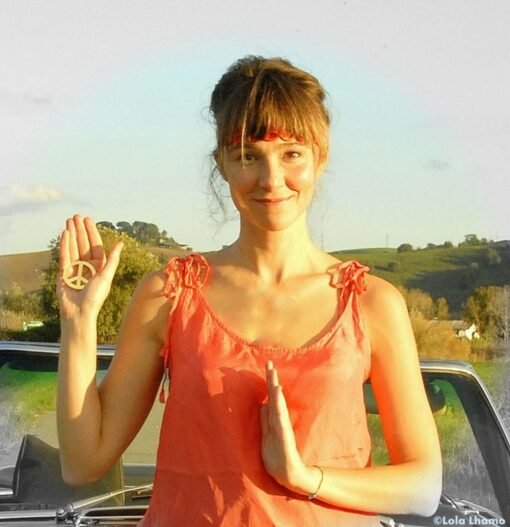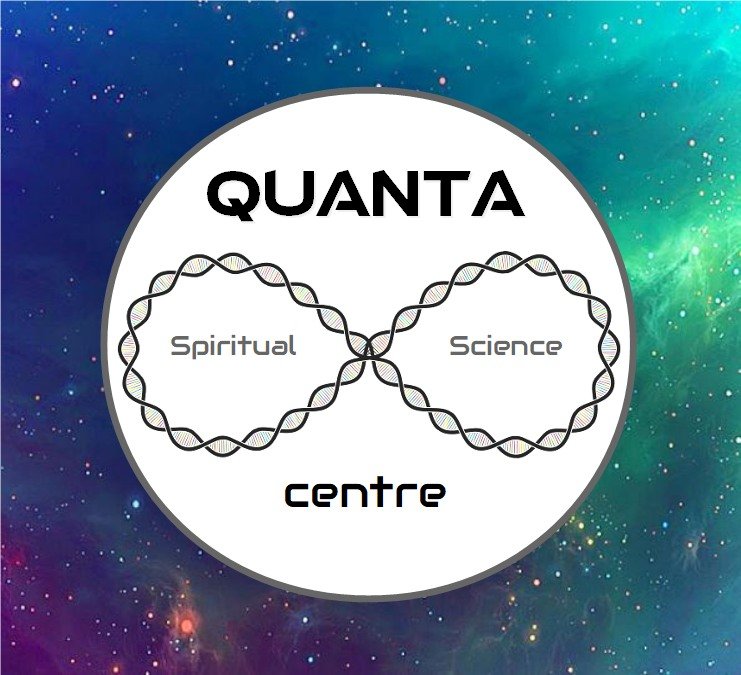< Back to Daoist Arts Centre Bali

Daoist Wisdom Meets Science
On Qi Regulation & Calming the Mind
“When the breath is calm, the mind is calm. When the breath is unsteady, the mind is unsteady. Therefore, cultivate the Lower Dantian to stabilize both.”
— 《黄帝内经》 (Yellow Emperor’s Inner Canon)
One of the most fascinating developments in modern science is its growing ability to validate ancient spiritual practices—revealing that what mystics, monks, and Daoist masters discovered through deep introspection aligning with the workings of our nervous system, brain, and biology. Practices like Lower Dantian breathing find validation in neuroscience as powerful regulators of the vagus nerve, the insula, and the default mode network. It’s a thrilling convergence: where Daoists spoke of ‘calming the heart-mind,’ we now see measurable reductions in cortisol and amygdala activity; where they cultivated ‘elixir fields,’ we now observe enhanced interoception and neuroplasticity. This bridge between ancient wisdom and cutting-edge research doesn’t just demystify tradition—it deepens our respect for the intuitive genius of those who mapped the inner landscape of human potential long before fMRI machines existed.
- Belly Breathing = Vagal Activation → Matches Daoist “calming Qi.”
- Insula & Interoception → Reflects “Shen refinement” in texts.
- DMN Quieting → Parallels “stillness of the heart-mind.”
Let’s dive deep into fascinating journey on how Daoist mind-body unity practices are now validated by neuroscience.
The Daoist practice of focusing on the Lower Dantian (Xià Dāntián, 下丹田, located around three finger-widths below the navel), often described as an energy center, has numerous reported benefits that are beginning to find intriguing parallels and explanations within the field of neuroscience. While the Daoist concept of “Qi” (vital energy) doesn’t have a direct Western scientific equivalent, the practices associated with Dantian focus, particularly deep breathing and mindful awareness, have measurable physiological and neurological effects.
Here’s a breakdown of how the benefits of Lower Dantian focus can be connected with neuroscience:
1. Enhanced Autonomic Nervous System Regulation (Parasympathetic Activation):
- Daoist Perspective: Focusing on the Lower Dantian is believed to calm the mind, ground energy, and promote a sense of inner peace and stability. This is often linked to “calming the Shen (mind)”, cultivating “Jing” (essence), and strengthening “Qi.” Lower Dantian breathing involves consciously expanding the lower abdomen, creating intra-abdominal pressure and enhancing Qi circulation in Daoist terms.
- Neuroscience Connection: The Lower Dantian is located in the abdominal region, which is heavily innervated by the vagus nerve, a key component of the parasympathetic nervous system. Belly (abdominal) breathing involves deeper engagement of the transverse abdominis and pelvic floor, increasing intra-abdominal pressure and vagus nerve stimulation.
- Vagal Nerve Stimulation: Activating the vagus nerve leads to a “rest and digest” response, reducing heart rate, lowering blood pressure, promoting relaxation, and decreasing the activity of the sympathetic “fight or flight” nervous system. This aligns perfectly with the Daoist aim of calming the mind and body.
- Reduced Stress and Anxiety: Neuroscientific studies show that practices like deep, abdominal breathing (often associated with Dantian focus) can reduce cortisol levels, a primary stress hormone, and decrease activity in brain regions associated with fear and anxiety, such as the amygdala.
- Belly breathing enhances vagus nerve activation more than chest or diaphragmatic breathing alone (Streeter et al., 2012). Study: “Effects of Yoga on the Autonomic Nervous System, Gamma-Aminobutyric Acid, and Allostasis in Epilepsy, Depression, and Post-Traumatic Stress Disorder” (Streeter et al., 2012) links slow abdominal breathing to increased parasympathetic tone and GABA (a calming neurotransmitter).
- Daoist claims of “calming the Shen (mind)” align with heart rate variability (HRV) improvements from belly breathing (Lehrer & Gevirtz, 2014).

On Belly Breathing & Longevity
“The breath must sink to the sea of Qi (Lower Dantian). Only then can the roots of life be nourished.”
— 《老子》 (Laozi, Dao De Jing)
Neuroscience Link:
- Deep abdominal breathing improves heart rate variability (HRV), a biomarker of longevity and stress resilience (Lehrer & Gevirtz, 2014).
2. Improved Interoception and Body Awareness:
- Daoist Perspective: Focusing on the Dantian cultivates a deep awareness of one’s internal bodily sensations and energetic processes, leading to a profound sense of embodiment and connection. The Lower Dantian is associated with bodily awareness (interoception), which is processed by the insula cortex.
- Neuroscience Connection: Interoception refers to the brain’s ability to sense and interpret internal bodily signals (e.g., heart rate, breath, gut sensations). Neuroscience shows that focused attention on internal body areas (like the breath or abdominal region) strengthens insula activation, improving emotional regulation and self-awareness.
- Insula Activation: The insula cortex, a brain region crucial for interoception, is often activated during mindfulness and meditation practices that involve focused attention on bodily sensations. Regular Dantian focus likely strengthens this neural pathway, leading to a more refined sense of one’s internal state. Study: “Interoceptive awareness in experienced meditators” (Farb et al., 2013) found that meditators had stronger insula activation and better emotional regulation.
- Proprioception and Balance: The Lower Dantian is considered the body’s center of gravity. Consciously rooting awareness there can improve proprioception (the sense of one’s body in space) and balance, which involves complex integration of sensory information by the cerebellum and other motor control areas of the brain.
On the Lower Dantian as the “Elixir Field”
“The Lower Dantian is the furnace where the Three Treasures (Jing, Qi, Shen) are refined. Guard it well, and the spirit will flourish.”
— 《周易参同契》 (Zhouyi Cantong Qi, “The Seal of the Unity of the Three”)
Neuroscience Link:
- Focus on the abdomen enhances insula cortex activity, integrating body-mind awareness (Farb et al., 2013), akin to Daoist “Shen refinement.”
3. Enhanced Cognitive Function and Emotional Regulation:
- Daoist Perspective: Cultivating “Qi” in the Lower Dantian is believed to create a stable foundation that supports mental clarity, emotional balance, and even higher states of consciousness.
- Neuroscience Connection:
- Prefrontal Cortex Activity: Mindfulness and focused attention practices, like Dantian breathing, have been shown to increase activity and connectivity in the prefrontal cortex, the brain’s executive control center. This can lead to improved attention, focus, decision-making, and emotional regulation.
- Default Mode Network (DMN) Modulation: The DMN is active during mind-wandering and self-referential thought. Dantian focus, by directing attention inwards, can help to quiet the DMN, reducing rumination and promoting a more present and less self-absorbed state. Lower Dantian focus reduces DMN hyperactivity, linked to anxiety and rumination. Study: “Mindfulness practice leads to increases in regional brain gray matter density” (Hölzel et al., 2011) shows that body-focused meditation decreases DMN overactivity.
- Neuroplasticity: Long-term practice of mind-body techniques can induce structural and functional changes in the brain (neuroplasticity), leading to lasting improvements in cognitive and emotional well-being.
- Deep Relaxation: belly breathing’s rhythmic nature may induce theta waves (4-7 Hz), associated with deep relaxation (Jerath et al., 2015).

On Breath & Emotional Mastery
“Regulate the breath to regulate the heart-mind. The Qi follows the Yi (intention).”
— 《太乙金华宗旨》 (Secret of the Golden Flower)
Neuroscience Link:
- Intentional breath focus reduces amygdala hyperactivity (fear center) and strengthens top-down PFC regulation (Tang et al., 2015).
4. The “Second Brain” (Enteric Nervous System):
- Daoist Perspective: Some Daoist texts refer to the Lower Dantian as having a “mind” or being a “second brain,” implying its significant role in overall well-being.
- Neuroscience Connection: The enteric nervous system (ENS), often called the “second brain,” is a complex network of neurons lining the gut. It communicates extensively with the brain via the gut-brain axis.
- Gut-Brain Axis: The ENS influences mood, stress response, and even cognitive function. Practices that focus on the abdominal region and promote healthy gut function (like deep breathing, which can gently massage the internal organs) may positively influence the gut-brain axis, contributing to the holistic benefits observed in Daoist practice.
Neuroscience Link:
- Intra-abdominal pressure from belly breathing engages core stabilizers and improves posture via the sensorimotor cortex (Grenier et al., 2003).

On Physical Stability & Energetic Root
“A tree’s strength lies in its roots; a man’s strength lies in his Dantian.”
— Traditional Daoist proverb
5. Intra-Abdominal Pressure & Core Stability
Daoist Perspective: Daoist texts describe the Lower Dantian as the “root of power”.
Neuroscience Connection: Neuroscience supports that abdominal engagement improves proprioception and core stability via the sensorimotor cortex (Grenier et al., 2003).
6. Energy and Bioelectricity (Emerging Areas):
- Daoist Perspective: The Dantian is seen as a reservoir of “Qi” or vital energy, which flows through meridians and nourishes the body.
- Neuroscience Connection: While “Qi” isn’t a recognized bioelectrical force in Western medicine, there’s growing interest in understanding the subtle bioelectrical signals within the body.
- Electrophysiological Changes: Some studies on Qigong (which often involves Dantian focus) have shown changes in brainwave patterns (e.g., increased alpha and theta activity associated with relaxation and attentiveness). This suggests measurable electrophysiological correlates of these practices.
- Cellular Energy and Mitochondria: On a cellular level, energy is produced by mitochondria. While not directly linked to Dantian focus in a causal way yet, practices that promote overall cellular health and efficient energy metabolism could hypothetically contribute to a sense of increased “vitality.”
In conclusion, while the language and conceptual frameworks may differ, the reported benefits of Daoist Lower Dantian focus align remarkably well with observable physiological and neurological changes studied in neuroscience. The emphasis on deep, mindful breathing, interoceptive awareness, and abdominal centering appears to activate the parasympathetic nervous system, enhance brain regions associated with attention and emotional regulation, and potentially influence the gut-brain axis, all contributing to a profound sense of well-being, calm, and stability.
The growing synergy between ancient Daoist practices and modern neuroscience isn’t just a personal wellness breakthrough—it’s a societal game-changer. When individuals cultivate Lower Dantian breathing and mindful body awareness, the ripple effects transform communities: reduced stress and anxiety lead to clearer communication, stronger relationships, and more resilient social structures. Neuroscientific findings confirm that practices like belly breathing lower collective stress hormones, improve emotional regulation, and even enhance empathy—key ingredients for a harmonious society. Imagine workplaces where employees harness breathwork to stay focused under pressure, schools where students learn interoceptive awareness alongside math, or neighborhoods where conflict resolution begins with shared grounding techniques. By merging Daoist wisdom with evidence-based science, we don’t just heal individuals; we seed cultures of presence, patience, and mutual understanding, fostering communities that thrive from the inside out.
Discover more at Daoist Meditation and Qi Gong practices with Lola Lhamo, Daoist Arts Centre Five Dragons Wulong in Bali.
Author

Lola Lhamo ~ Bridging Ancient Wisdom and Modern Science
Lola Lhamo is an energy healer, teacher, and the visionary behind QUANTA Energetics & Leadership. She expertly bridges ancient spiritual practices with cutting-edge science, exploring the profound connection between the two and applicable way of integrating this wisdom for Architects of New Earth.
Deeply rooted in Buddhism, Daoism, and Yoga, Lola dedicates her life to uncovering the healing power of energy and heart-mind. Her extensive expertise covers movement arts (Yoga, Qi Gong, Tai Chi, Wudang Sword), energy medicine (Daoist Medicine, Acupuncture, Reiki, Sound Energy Medicine), and the transformative depths of Daoist Alchemy and Himalayan Mysticism, trained by revered masters like Grandmaster Mantak Chia, Li Shifu (Wudang Five Immortals Temple), Yogi Ashokananda, and Tibetan Nyingma & Bon lamas. Lola is a holder of the Daoist Dragon Gates (31st generation) and Pure Yang (24th generation) lineages, and helped build the Buddhist Stupa of Enlightenment at the Roerich Museum.
Through her pioneering initiatives like Daoist Arts Centre, QUANTA Bio-Energy Centre, SoundEnergyMedicine.com, and Creators.Earth, Lola creates powerful bridges. She seamlessly integrates Daoist Arts with Neuroscience, Sound Therapy with Frequency Medicine, Meditation with Brainwave Optimization. Drawing on over 15 years in international strategy consultancy spearheading innovative turnarounds, this unique holistic approach forms the core of her global empowerment QUANTA Coaching for Architects of New Earth.
Lola enjoys guiding modern seekers – her trainings and visionary programs in QUANTA Energetics & Leaderhip empower individuals to harness both spiritual wisdom and scientific insight, building a living platform for vitality, clarity, wholeness, and collective well-being.
< Back to Daoist Arts Centre Bali
Sources
Principles of Qi Gong – Taoist Sanctuary of San Diego
Lower Dantian – A Guide to Understanding this Vital Energy Core – Gourmet Tea
www.internalartsinternational.com
Thoughts on Daoist Physiology Fundamental to Inner Alchemy: Dantian and the Curious Meridians: Part 1
What Are Dantian? The Energy Centers of Chinese Medicine – Healthline
Diaphragmatic Breathing – Johns Hopkins Medicine
The Vagus Nerve: A Key Player in Your Health and Well-Being – Massachusetts General Hospital

Leave a Reply